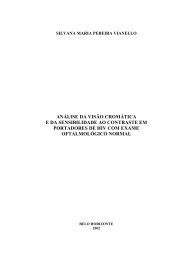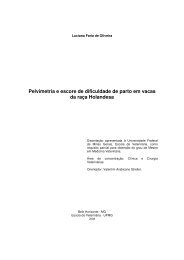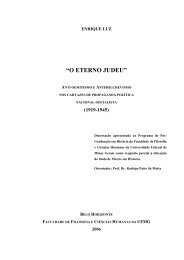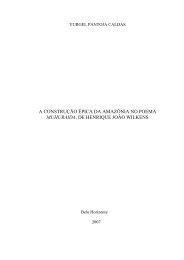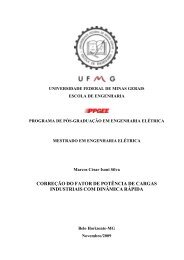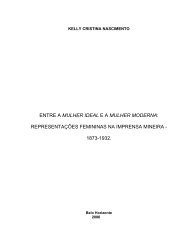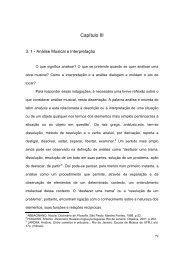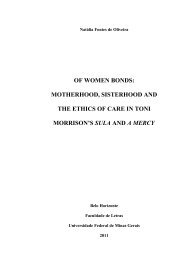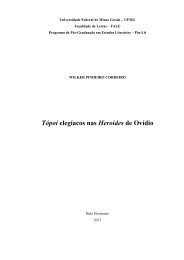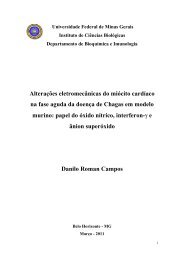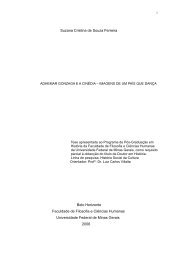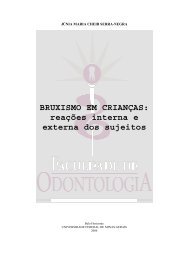Degradação de Substâncias de Relevância Ambiental por ...
Degradação de Substâncias de Relevância Ambiental por ...
Degradação de Substâncias de Relevância Ambiental por ...
You also want an ePaper? Increase the reach of your titles
YUMPU automatically turns print PDFs into web optimized ePapers that Google loves.
Figura 3.17 – ESI(-)-MS/MS para o ânion 1 <strong>de</strong> m/z 210.<br />
Após 10 minutos <strong>de</strong> borbulhamento com ozônio <strong>de</strong>tectou-se, no ESI(-)-MS, o<br />
surgimento <strong>de</strong> sinais <strong>de</strong> m/z 266, 244, 216, 171, 121.5, 107.5 (Figura 3.18).<br />
Figura 3.18 – ESI(-)-MS da solução aquosa <strong>de</strong> Índigo Carmim tratada com ozônio <strong>por</strong><br />
10 minutos.<br />
/ %<br />
Abundância Relativa<br />
/ %<br />
Abundância Relativa<br />
100<br />
80<br />
60<br />
40<br />
20<br />
80<br />
0<br />
50 100 150 200 250 300 350 400<br />
100<br />
80<br />
60<br />
40<br />
20<br />
[1c – H] 2- [1c – H] 2-<br />
Baseados nos resultados dos valores <strong>de</strong> m/z <strong>de</strong> tais íons, uma rota para a<br />
<strong>de</strong>gradação do Índigo Carmim foi proposta, a qual é mostrada no Esquema 3.2. As<br />
fragmentações <strong>por</strong> CID (collision-induced dissociation) <strong>de</strong> tais íons corroboraram as<br />
estruturas propostas, como será posteriormente <strong>de</strong>monstrado.<br />
156<br />
107,5<br />
170<br />
[1b –H] 2- [1b –H] 2-<br />
121,5<br />
210<br />
m/z<br />
236 260<br />
276<br />
Fragmentação<br />
171<br />
216<br />
340<br />
356<br />
244<br />
210<br />
[1b – H + Na]-<br />
266<br />
0<br />
50 100 150 200 250 300<br />
m/z<br />
-<br />
O3S<br />
1c<br />
-<br />
O3S<br />
O<br />
NH2 NH2<br />
OH<br />
O<br />
1b<br />
O<br />
NH 2<br />
OH<br />
121



